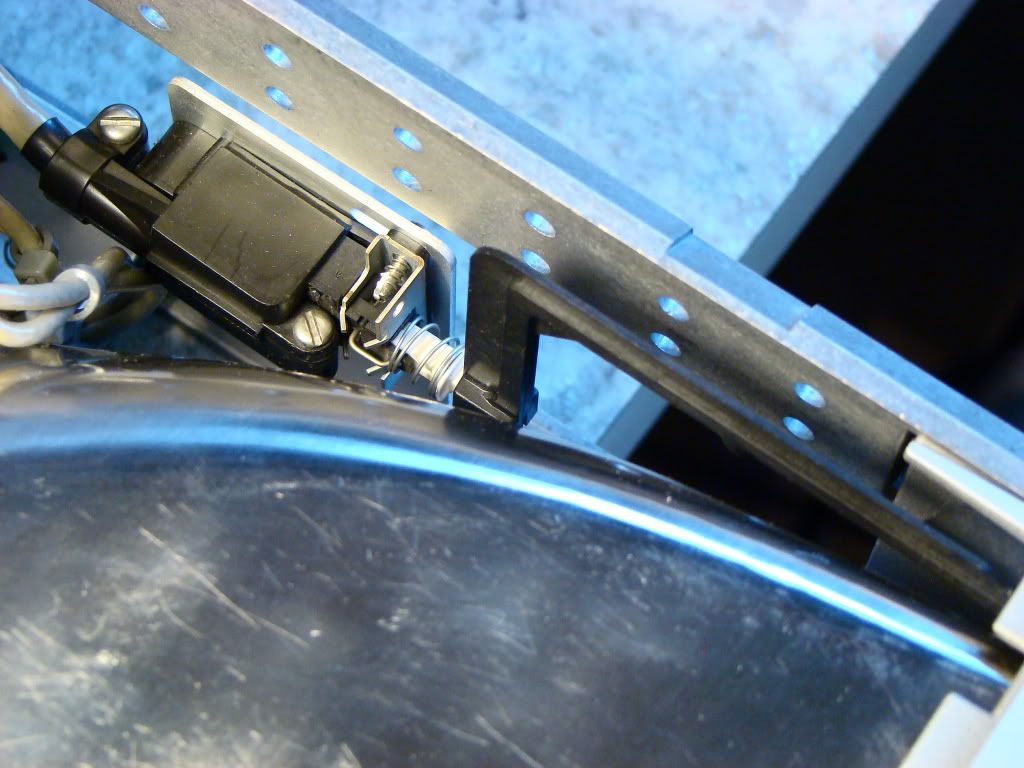I think this oscilloscope deserves a thread of its own.
I got this scope a few days ago. It was broken like most of the equipment I buy. The HP1980 plays an important role in the development of analog and digital oscilloscopes.This is basically an analog scope with microprocessor control and waveform storage. It only has 100MHz bandwidth but it is extremely useful (like any oscilloscope).
The user interface is very unique as it uses soft buttons. You select the setting you want to change (time base, attenuation, trace brightness...) and then use the rotary dial to change the setting. The current setting is also displayed on the screen and on the LED display above the dial. The center module of the scope can be removed and replaced with either two more channels or a high resolution frequency counter. The CRT is also bigger than on a normal analog scope (6'' as instead of 5''). A unique feature is the AUTOSCOPE button. This is basically the same as the autoscale button on todays digital scopes.
The package you see here cost 16150 USD back in 1982. Today this would be a whopping 37,100 USD.
The scope already in cleaned state. Sadly I don't have the images to show you the before and after state.

Top of the scope with its sides removed. Z axis amplifier, HV oscillator, expansion PROMs, GPIB I/O (or in this case HPIB I/O), digital processor and control board and shield of the massive CRT.
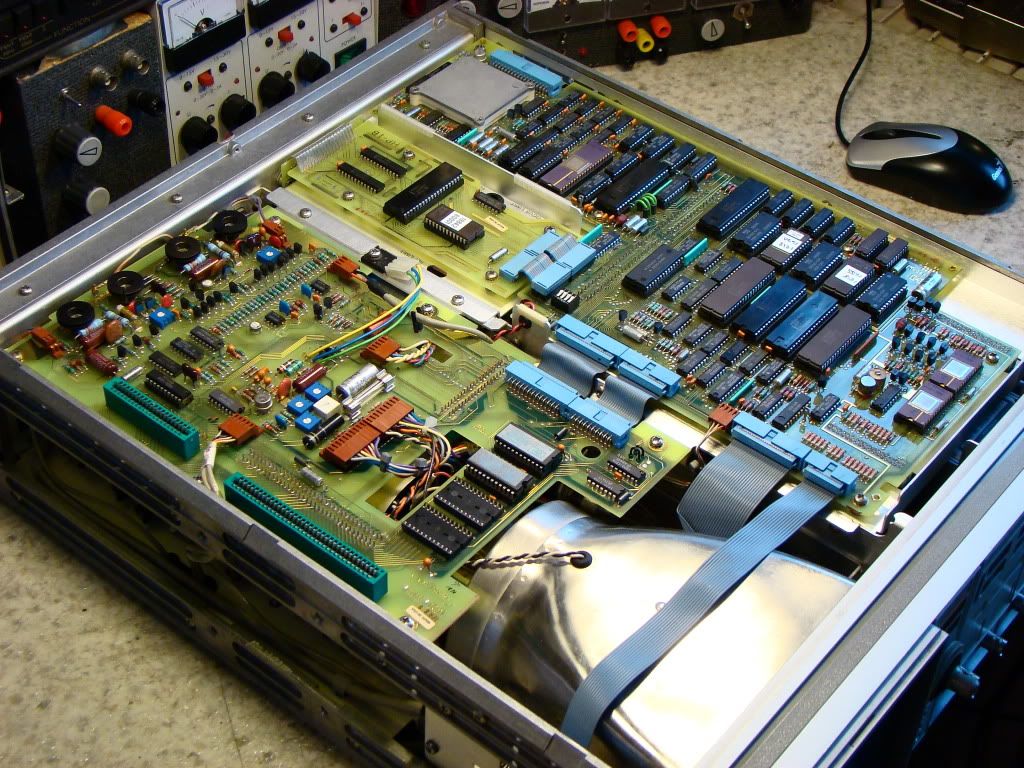
Z axis amplifier at the top and the HV oscillator circuit at the bottom of the picture.
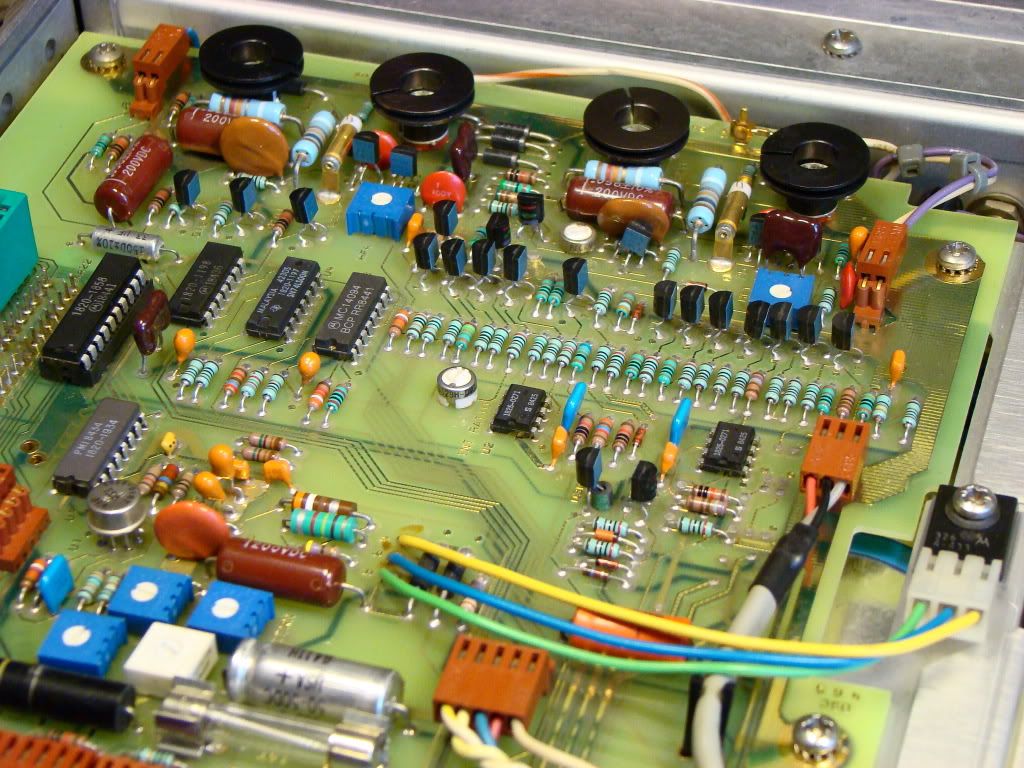
Digital processor and control board. The large metal thing at the back is a custom HP hybrid.
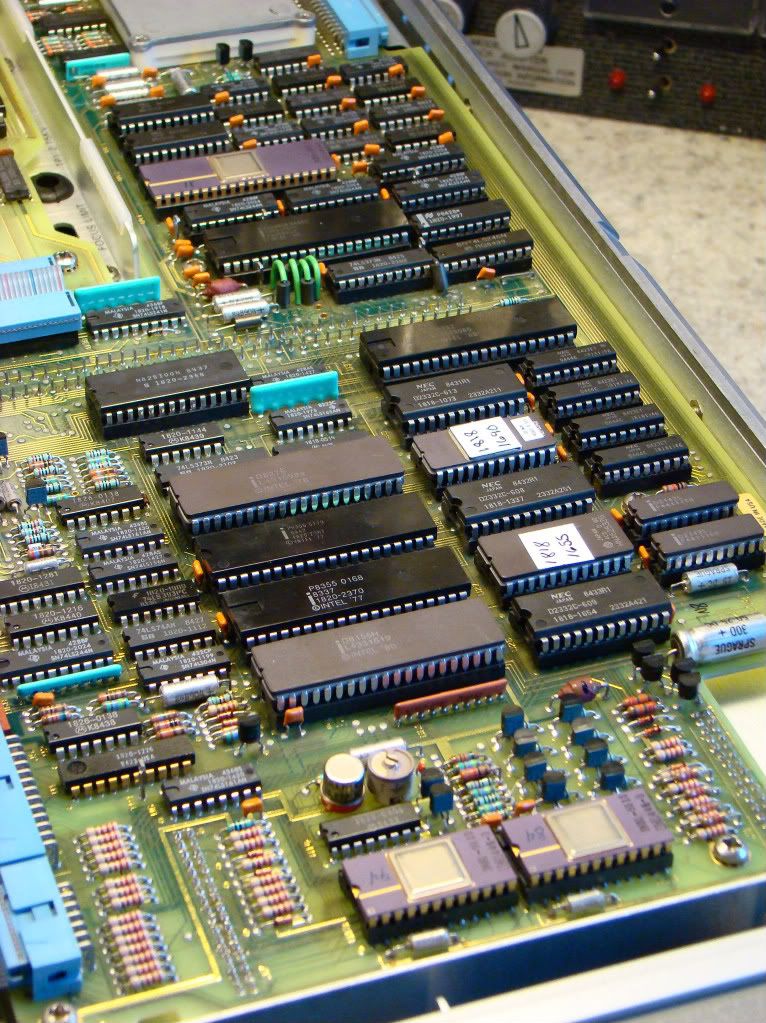
Lower board. Vertical and horizontal preamps, trigger amp, VCO time base, low voltage regulator, vertical and horizontal output amps.
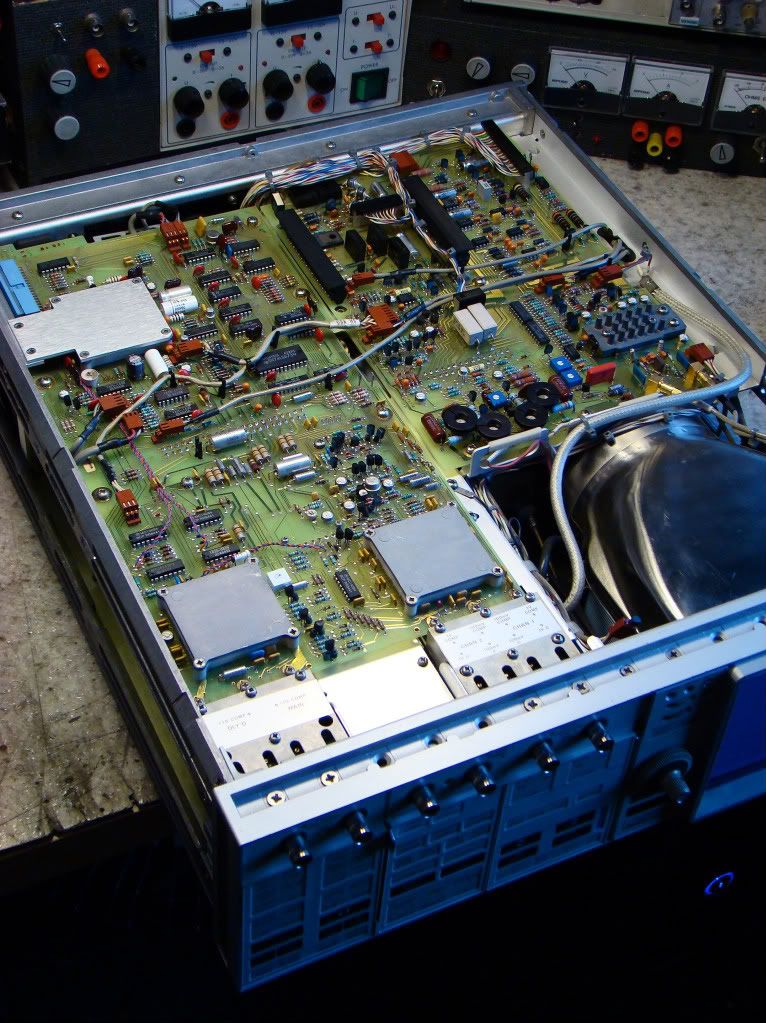
Another hybrid for the vertical preamplifier, lots of HF compensation, gain and offset adjustments here.

Horizontal output amplifier. The output goes directly to the horizontal deflection plates of the CRT.
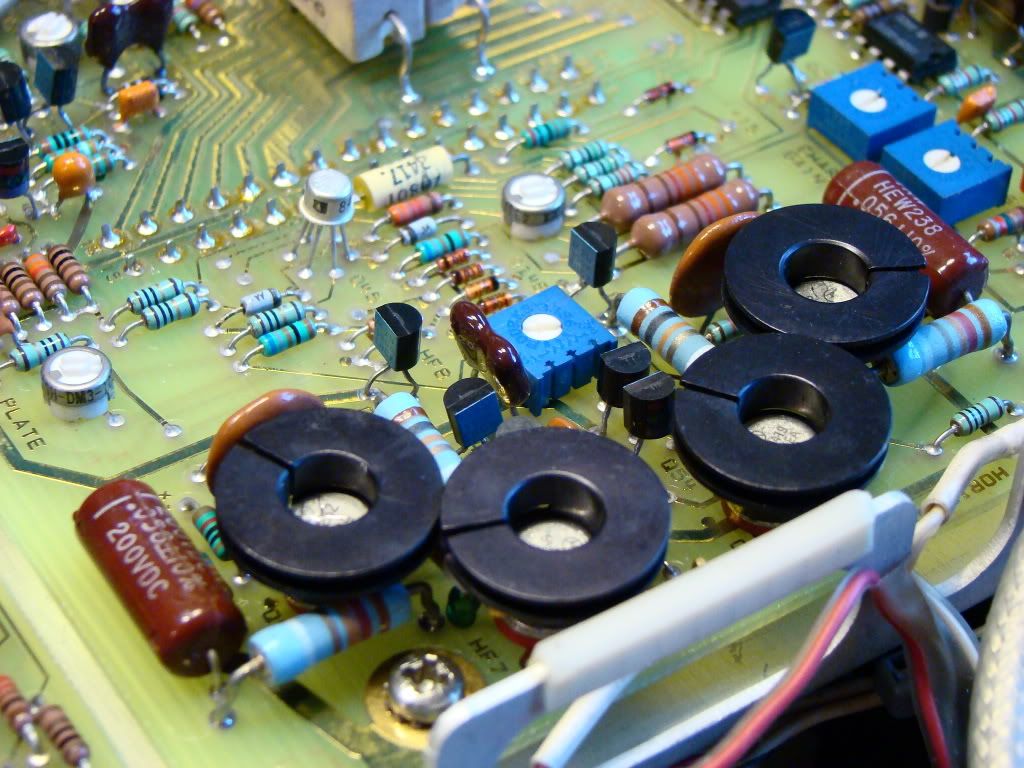
Vertical output amplifier. This connects to the vertical deflection plates of the CRT and the digital sampling board.

Vertical output amp hybrid. The gold contacts need cleaning, otherwise still in perfect condition.
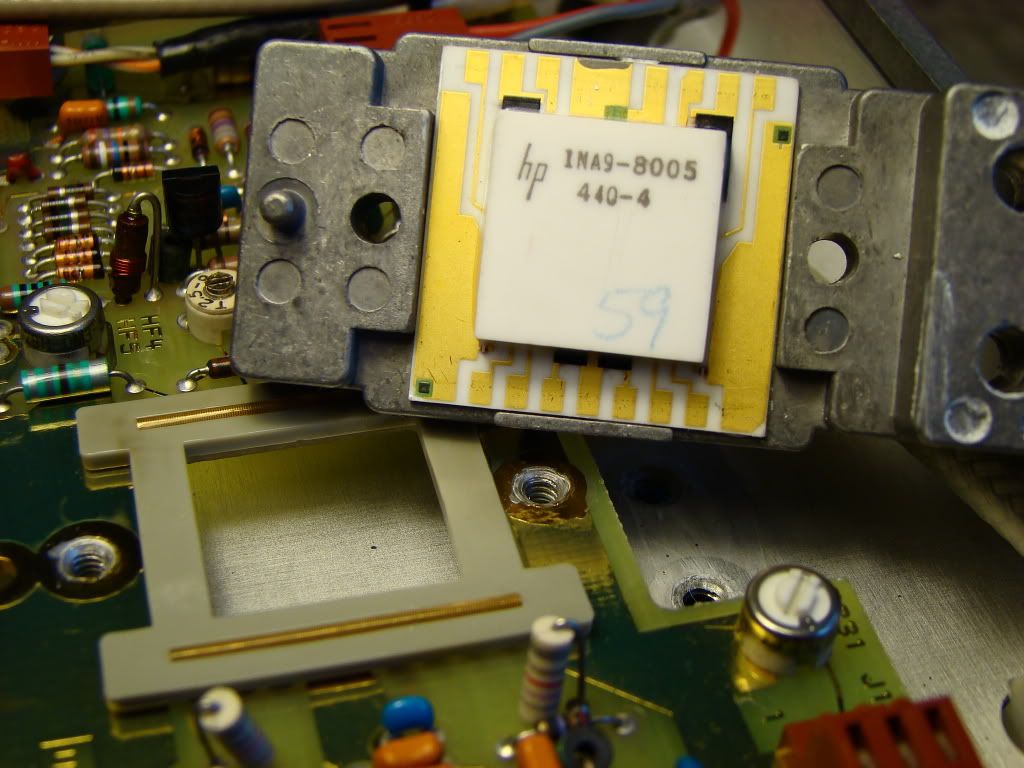
Low voltage regulator circuit. Lots of opamps and 9 big bridge rectifiers (3 below the board) for the 9 secondary windings of the massive 300W mains transformer.

Hughe CRT!!! The deflection plates are gold plated. The anode voltage is 26KV.
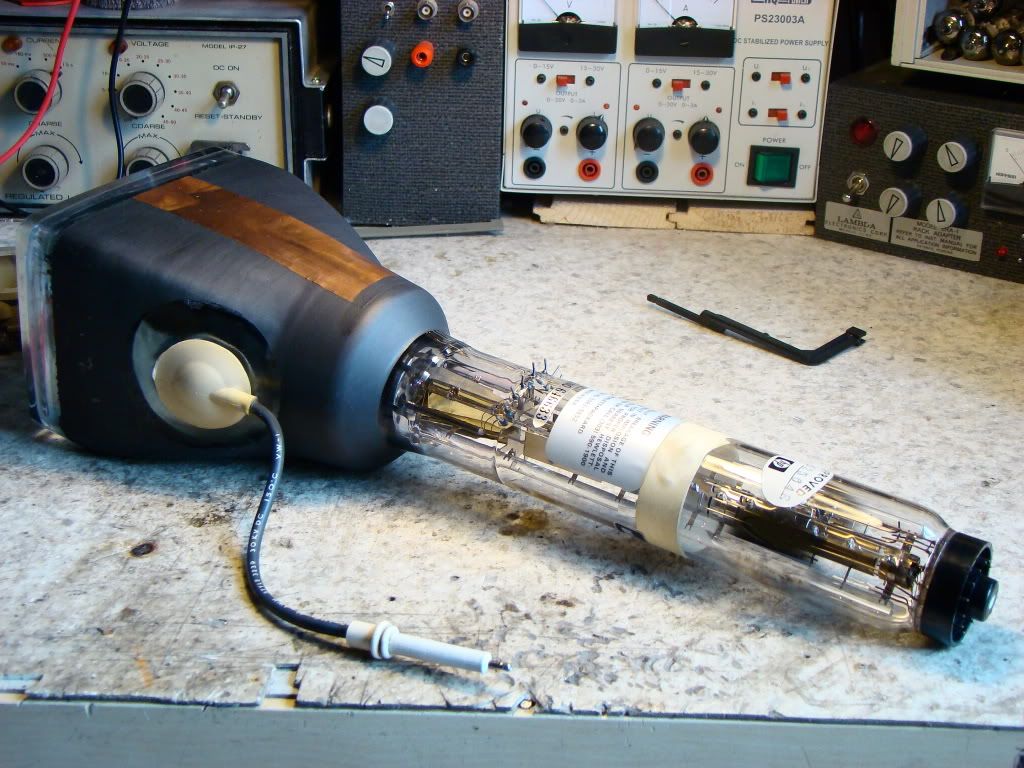
This is the fan driver. Yes, this is what it took to drive a simple brushless fan 30 years ago.
The fan is probably the smallest and loudest fan I've ever heard. It's impossible to have peace with this scope turned on.
And no, the fan CAN'T be replaced since it's very small and very high RPM. There's just no more room in this thing.
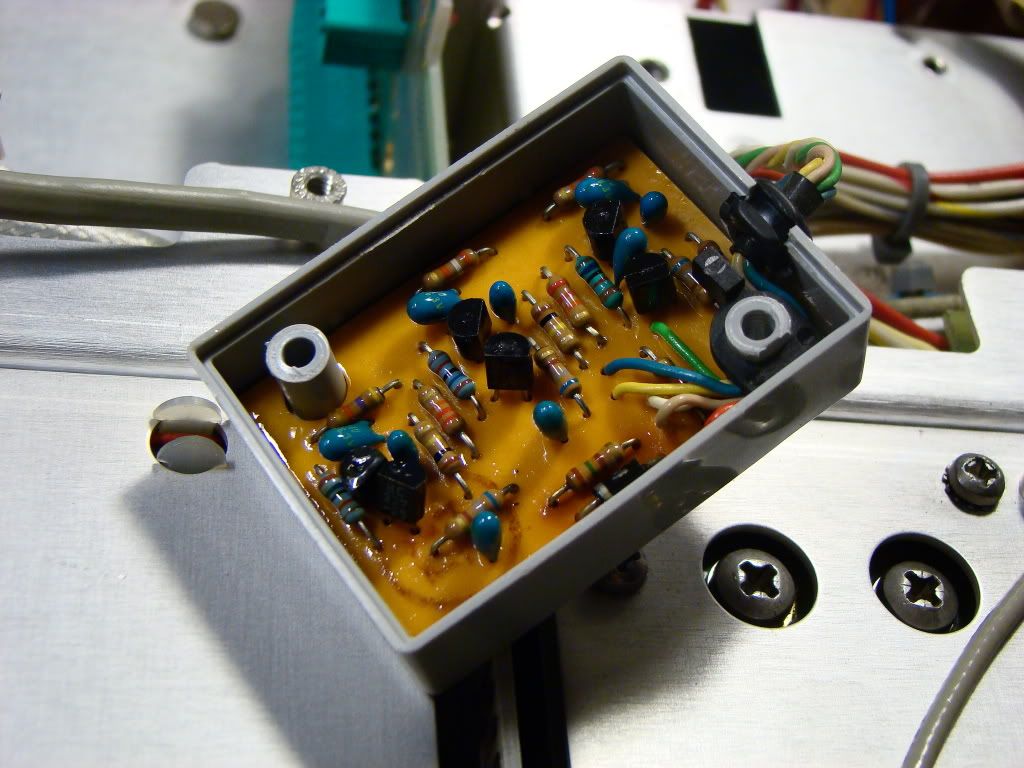
This board is actually the digital sampler board used to store a waveform. Yes they had that 30 years ago. A whopping 501 points of resolution (not megapoints, not even kilopoints).
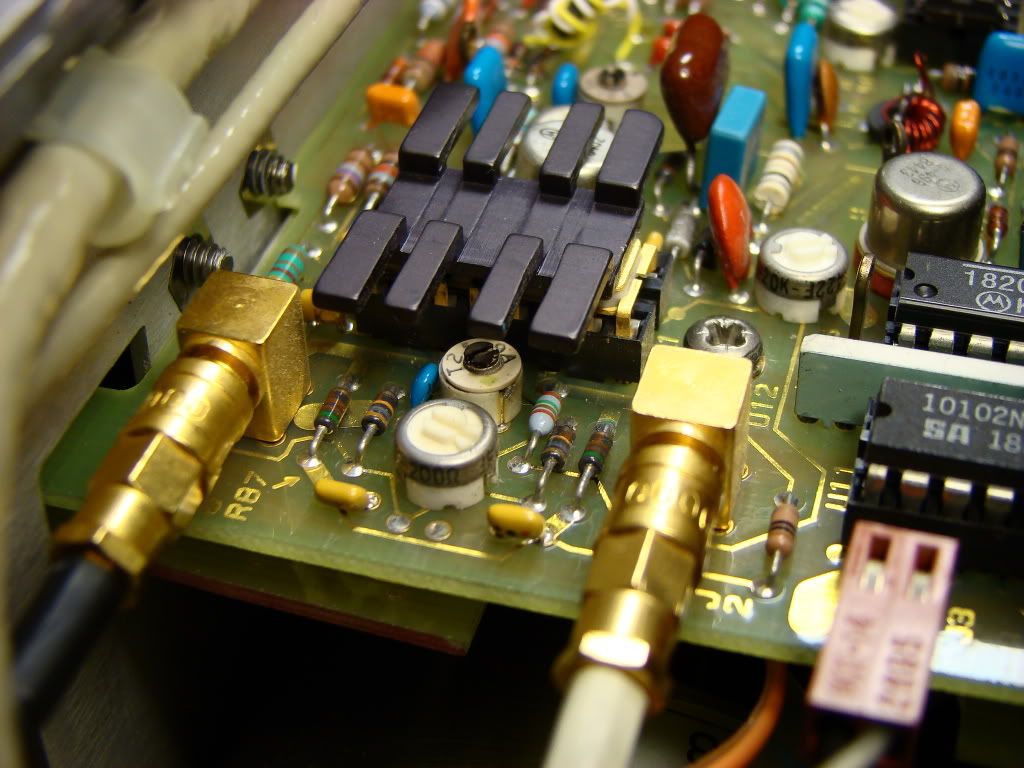
The screen interface is very nice. Individual readouts can be turned on or off by just a touch of a button.
A real lightshow. I tried to make most of the softbuttons illuminate.
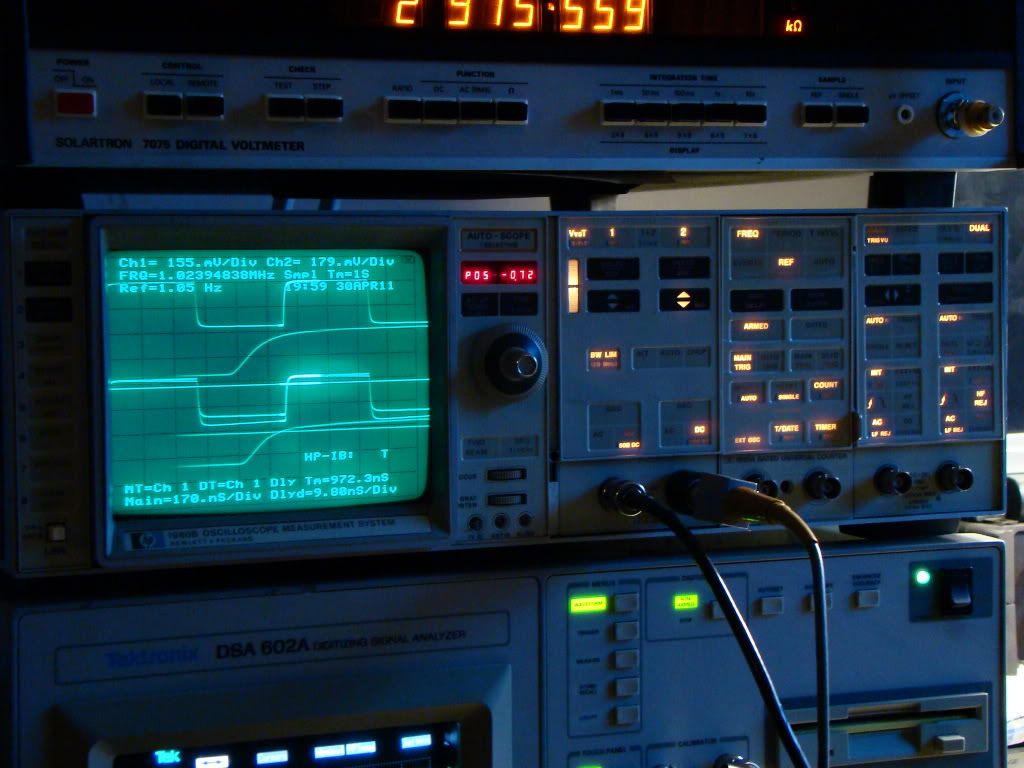
And yes this HP/Agilent draws 0 watts when turned off. But then again it draws 300W in normal operation.
Classic HP design with the extender shaft.
